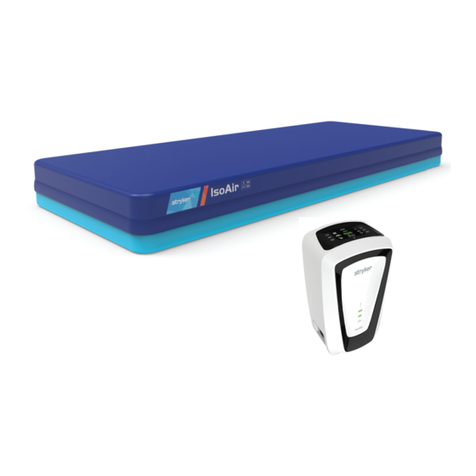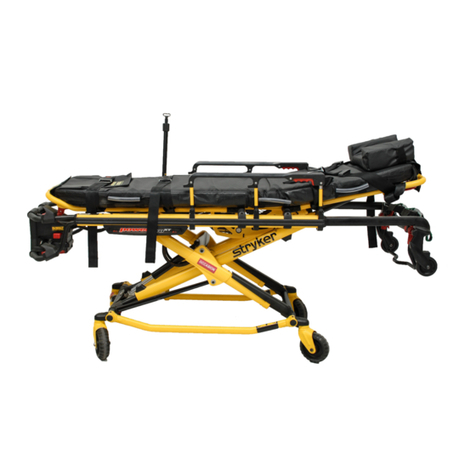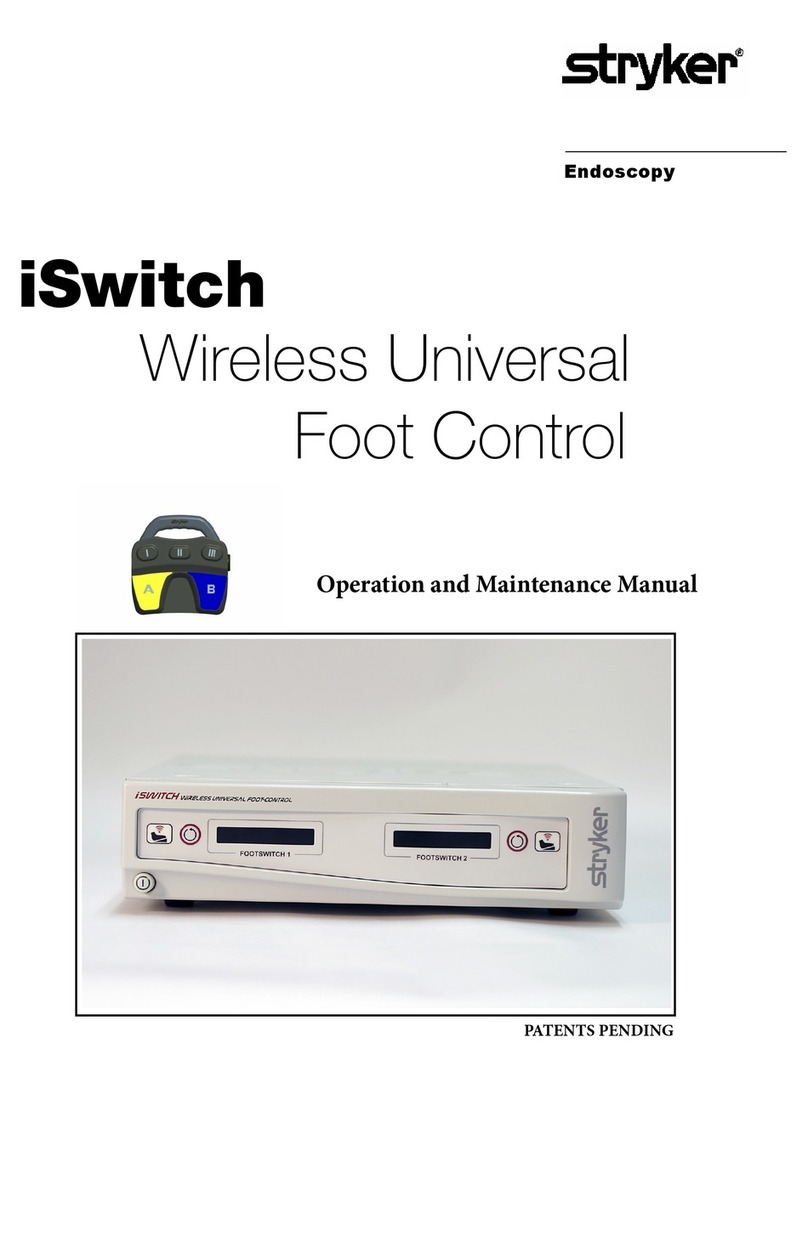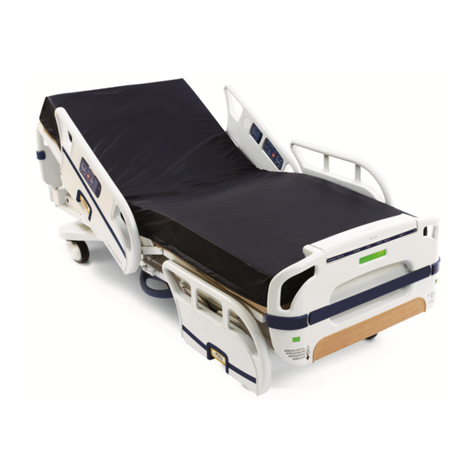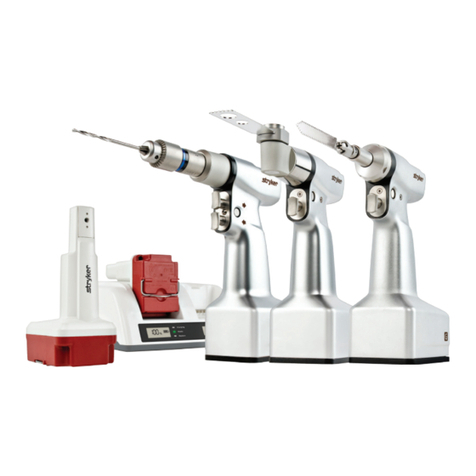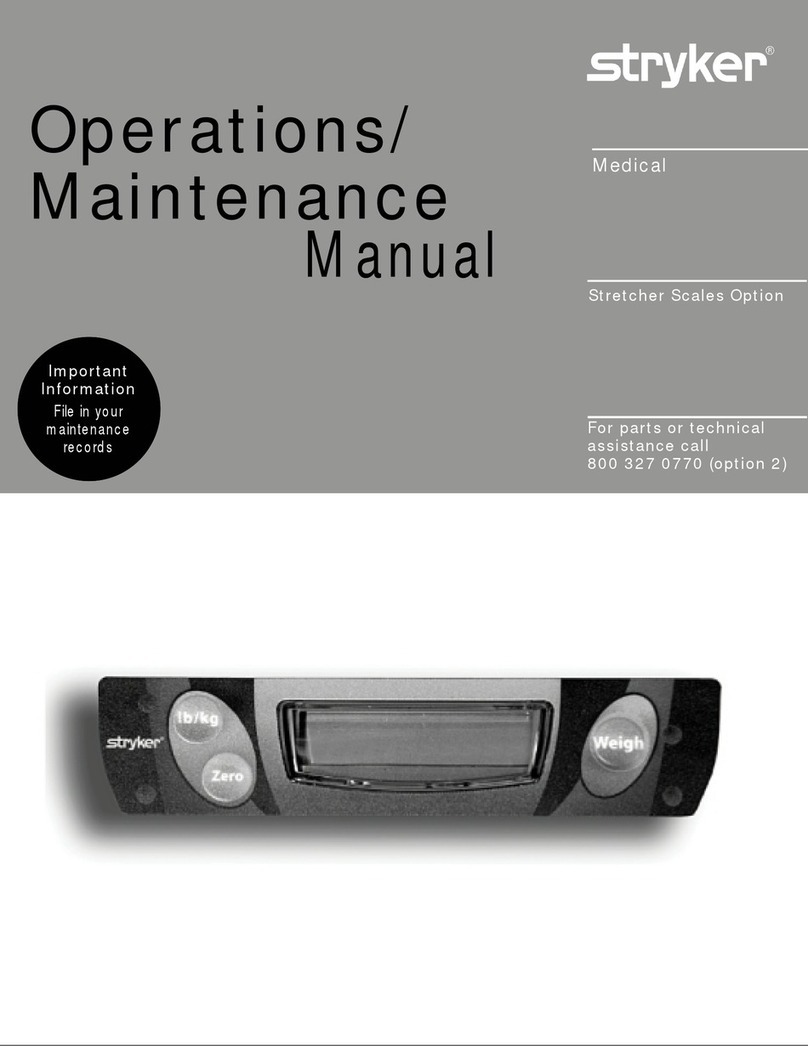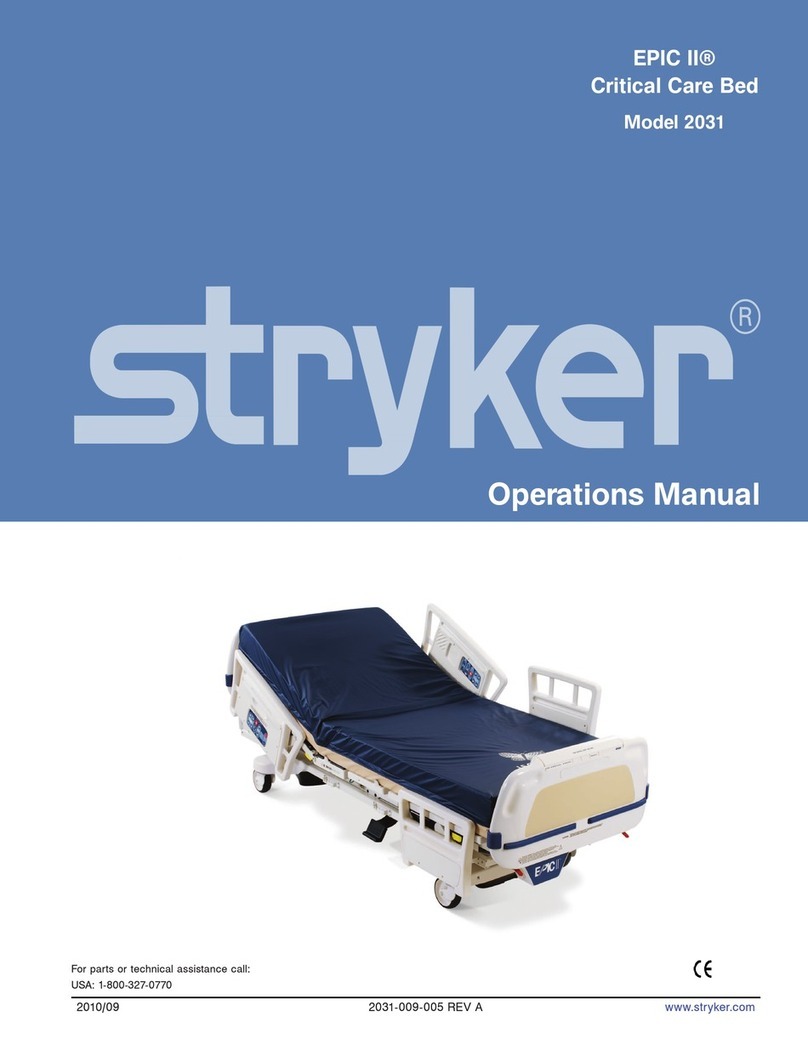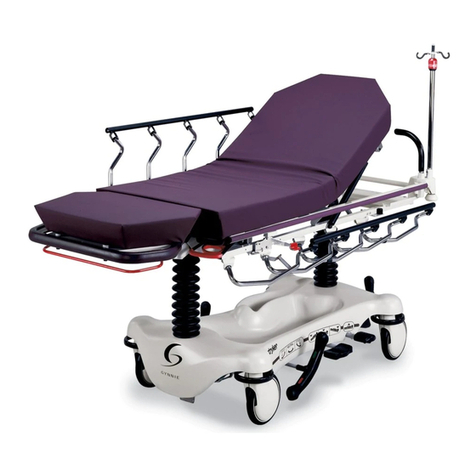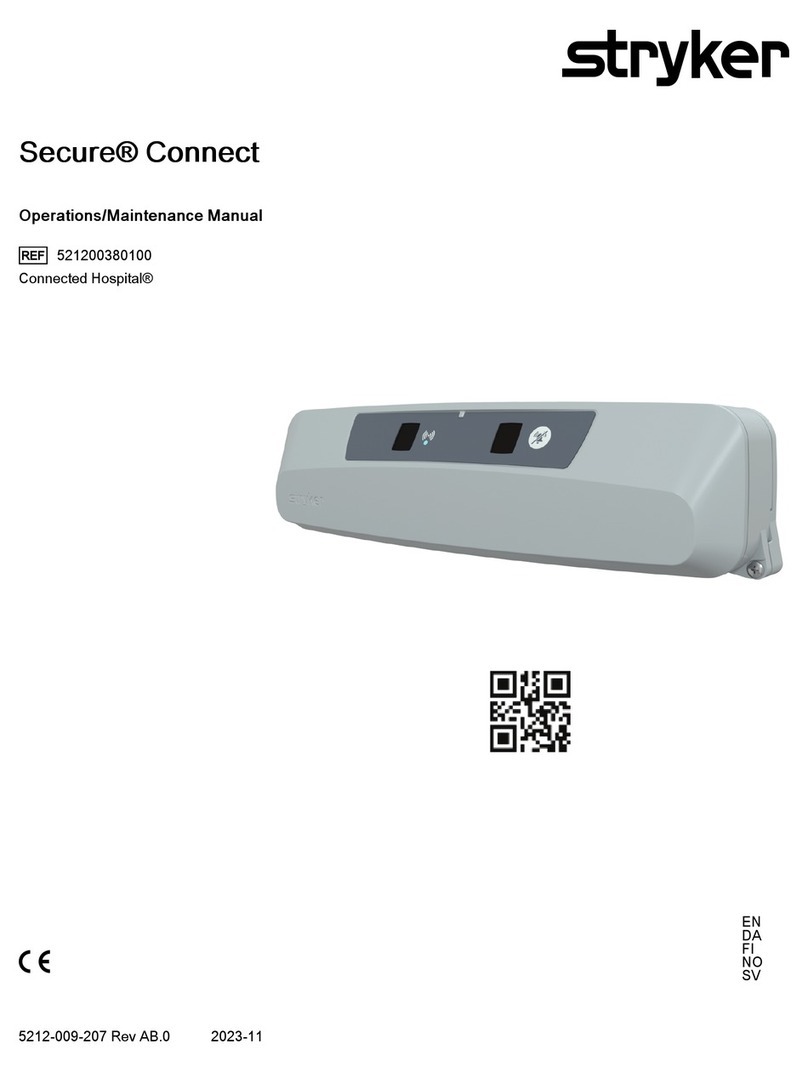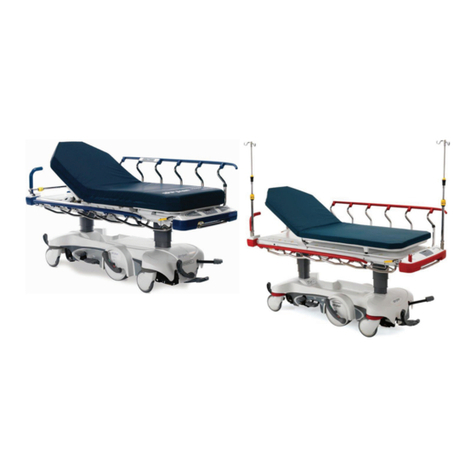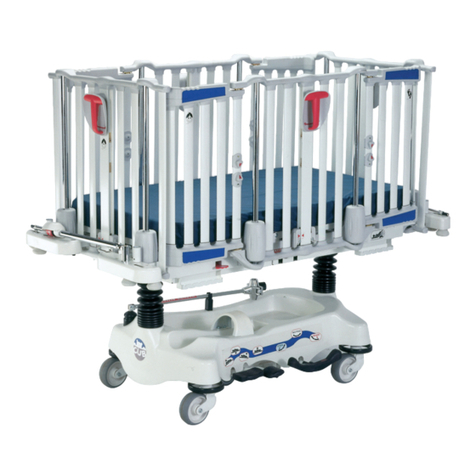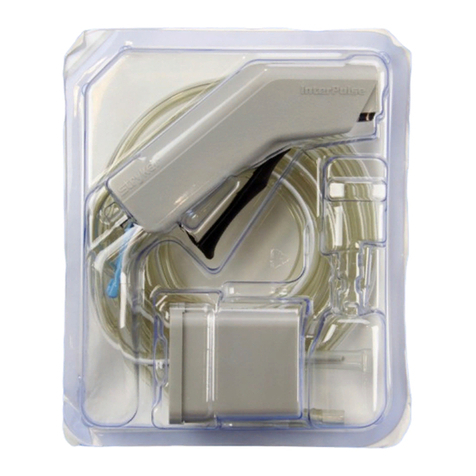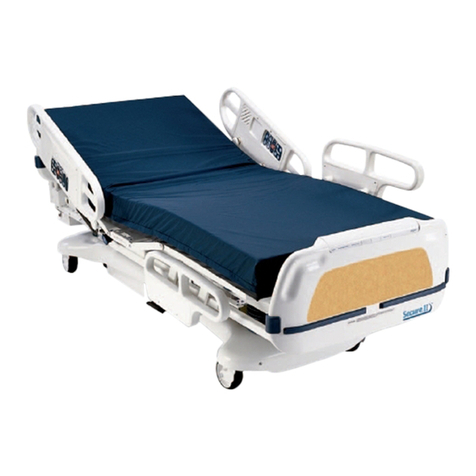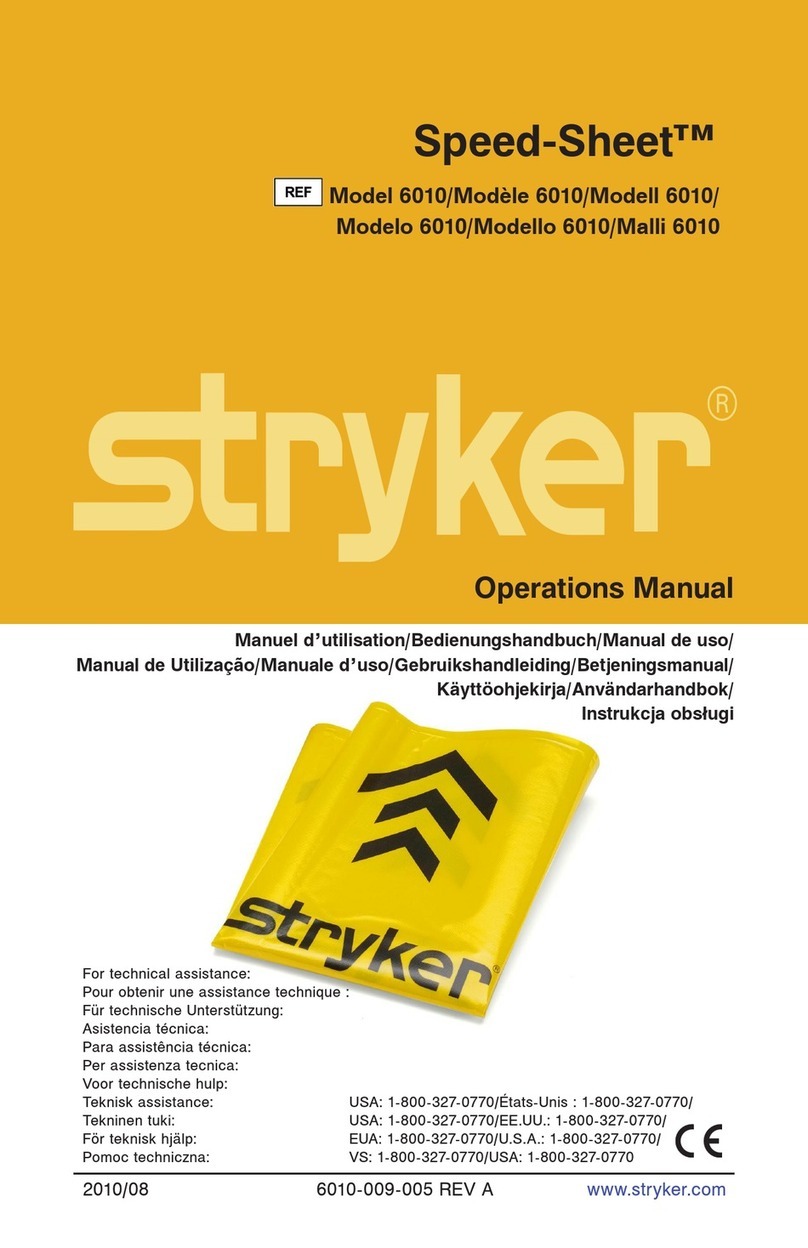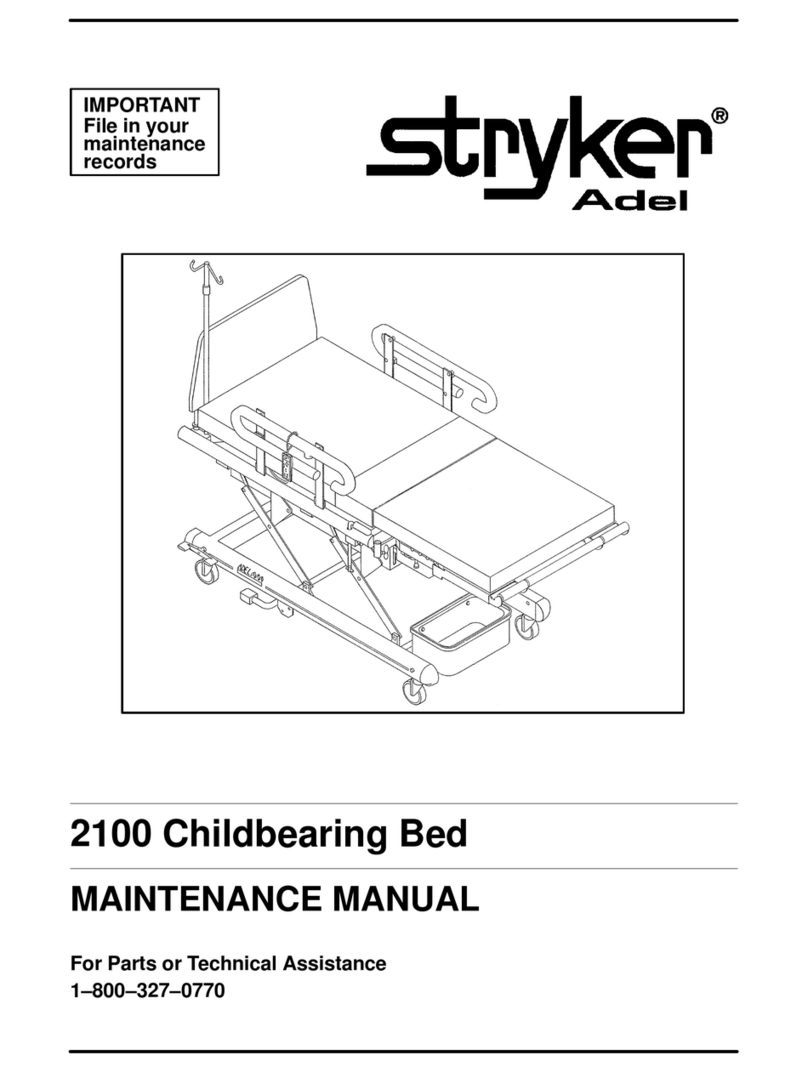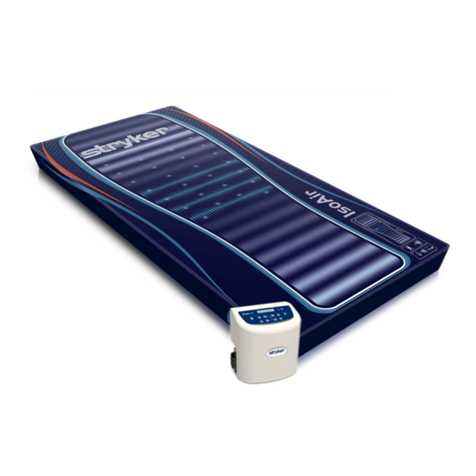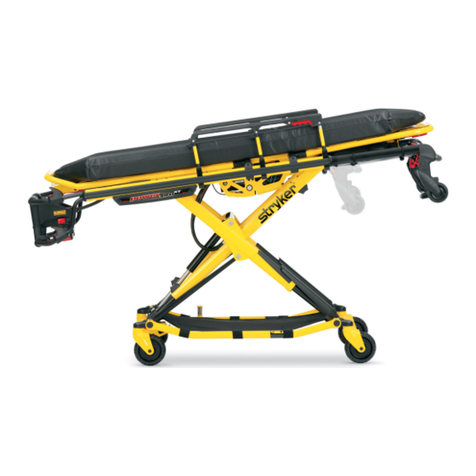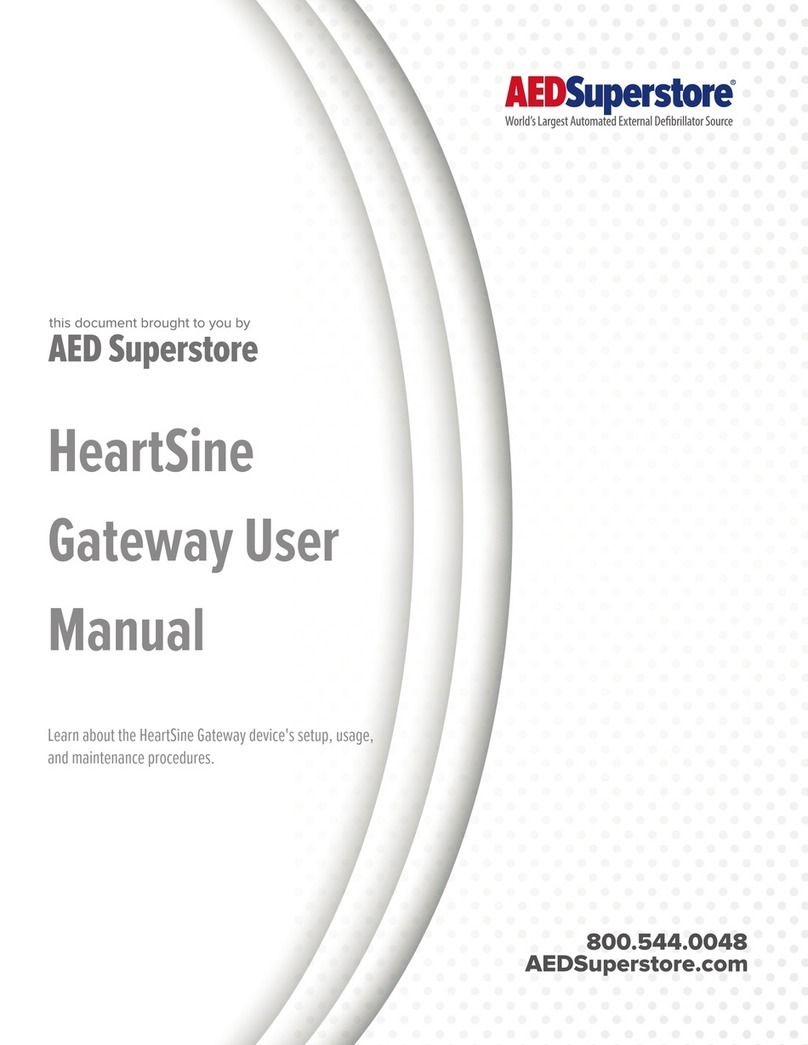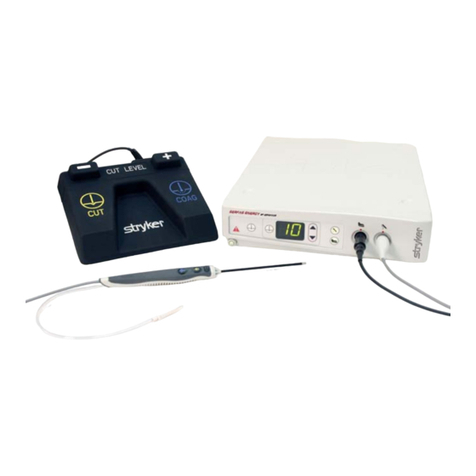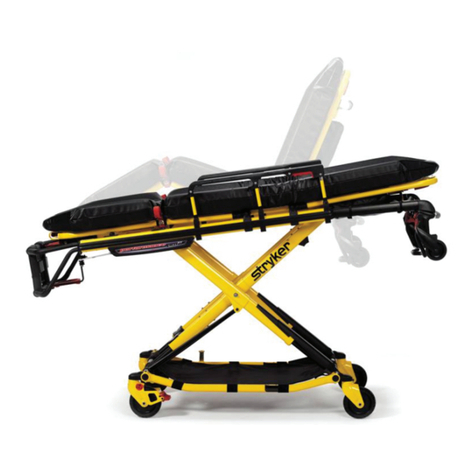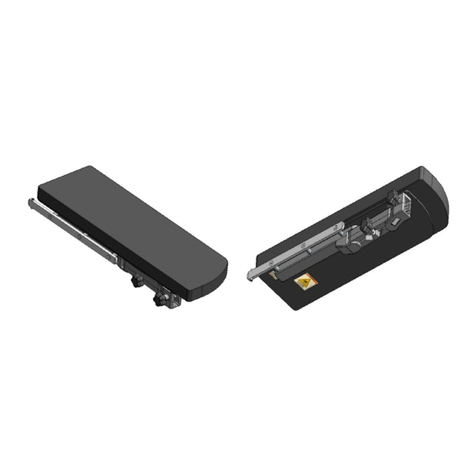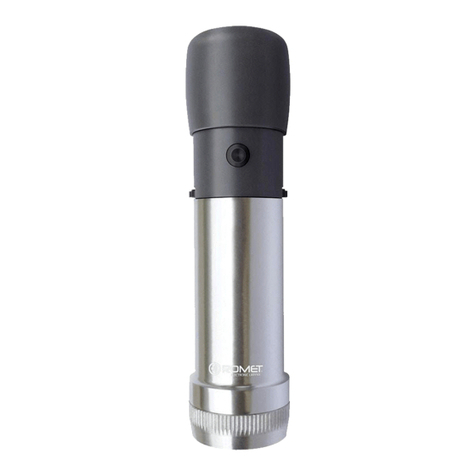
4 6550-009-001 REV B www.stryker.com
Table of Contents
AmbulanceCotMotion..................................................................42
TailLiftLoadingandUnloading ...........................................................43
RampLoadingandUnloading.............................................................44
Engaging/ReleasingtheCotintotheFastener.................................................45
HighSpeedRetract/Extend ..............................................................46
CasterSteerLock.....................................................................46
ManualRaisingandLoweringOfTheCot....................................................47
AdjustingCotHeight ...................................................................48
UsingAdditionalAssistance..............................................................48
OperatingtheRetractableHead/FootSections................................................49
BatteryOperation .....................................................................50
Hydraulic Sub-Assembly (6550-001-030) Access Instructions. . . . . . . . . . . . . . . . . . . . . . . . . . . . . . . . . . . . . . . . . 51
Cleaning ...............................................................................52
WashingProcedure....................................................................52
WashingLimitations....................................................................52
RemovalofIodineCompounds............................................................53
PreventativeMaintenance...................................................................54
RegularInspectionandAdjustments........................................................55
MaintenanceRecord.......................................................................57
TrainingRecord ..........................................................................58
CotAssembly............................................................................59
BaseAssembly...........................................................................71
TelescopingFootEnd......................................................................79
TelescopingHeadSection ..................................................................81
FowlerAssembly .........................................................................83
GatchAssembly..........................................................................84
TelescopingGatchAssembly ................................................................89
HitchAssembly,FootEnd...................................................................90
HitchAssembly,HeadEnd ..................................................................94
MountedHydraulicsAssembly................................................................97
HydraulicsSub-Assembly...................................................................99
OuterRail,PatientRight...................................................................101
OuterRail,PatientLeft....................................................................102
InnerLiftTubeAssembly...................................................................103
OuterLiftTubeAssembly..................................................................104
InnerLiftTubeAssembly,LitterPivot,PatientRight...............................................105
InnerLiftTubeAssembly,LitterPivot,PatientLeft................................................106
Caster,SteerLock,WheelLockAssembly......................................................107
CornerHandleAssembly ..................................................................108
2-StageI.V.Assembly,PatientLeft-6550-211-000 ............................................... 111
2-Stage I.V. Pole Assembly, Patient Left - 6500-001-042 . . . . . . . . . . . . . . . . . . . . . . . . . . . . . . . . . . . . . . . . . . . 112
2-StageI.V.Assembly,Dual-6550-212-000 .................................................... 113
3-Stage I.V. Assembly, Patient Right - 6550-215-000 . . . . . . . . . . . . . . . . . . . . . . . . . . . . . . . . . . . . . . . . . . . . . . 114
